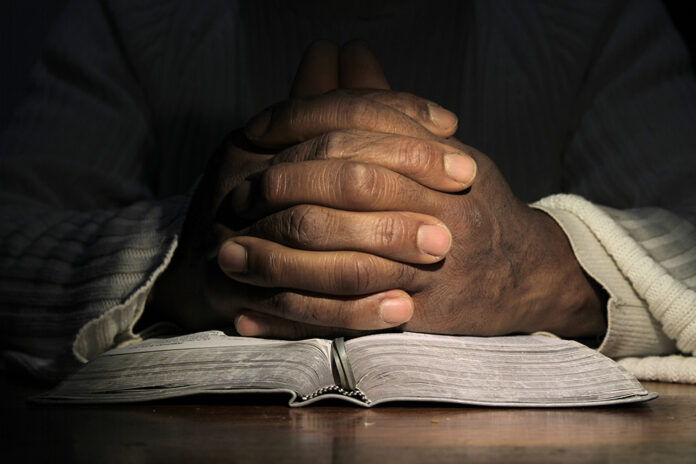Lent is a season of renewed focus on the great spiritual disciplines of prayer, fasting, and almsgiving. These practices make room in our hearts, in our habits, and in our homes, and then invite the Lord to enter the spaces that they create. One very powerful, yet perhaps rather unfamiliar form of prayer, allows us to sanctify time itself, the hours of the day, with the ancient rhythms of the Psalms. This prayer is known as the Liturgy of the Hours.
Liturgy is a familiar term. Most of us have heard of the Liturgy of the Word and the Liturgy of the Eucharist which are the two main parts of the Mass. The Liturgy of the Hours is likely less familiar. Sometimes called the Divine Office or simply the Brevary, it is the constant prayer of the Church through all hours of the day. It is an example of the prayer without ceasing that St. Paul promoted in 1 Thessalonian 5:17. It can be prayed with others or by yourself. Either way it enables the one praying to tap into the continuous dialogue between the Lord and His Church. In his Apostolic Constitution promulgating the updated Liturgy of the Hours following the Second Vatican Council, Pope St. Paul VI refers to the Liturgy of the Hours as “the means of sanctifying the day” (Laudis Canticum 2).
So what is this prayer? The Liturgy of the Hours is a prayer said at certain times throughout the day that centers on the great hymnal of ancient Israel and repository of divinely inspired emotive prayer: the 150 songs of praise, thanksgiving, petition, contrition, and remembrance of sacred history known as Psalms. Their recitation is broken up over seven designated times, or hours, throughout the day. The Office of Readings is typically prayed around sunrise, Morning Prayer around 6:00 AM, Midmorning Prayer around 10:00 AM, Midday Prayer at noon, Midafternoon Prayer around 3:00 PM, Evening Prayer around sundown, and Night Prayer just before bed. Priests and religious pray these hours every day, and many of the faithful have followed the Church’s encouragement to take up this great prayer, whether all seven hours or only some.
Perhaps in the heart of this Lenten season, the Lord might be calling you to grow in prayer and to sanctify the hours of the day by discovering the Liturgy of the Hours. If so, how would you even begin? Rather than jumping into all seven hours, it might be easiest to begin with the shorter hours such as the Daytime Hours (Midmorning, Midday, or Midafternoon Prayers) or Night Prayer. Or you might prefer to begin with one or both of the most important hours: Morning Prayer and Evening Prayer. If you do not have someone who prays the Office to show you how it works, the next best thing is to use an internet guide like DivineOffice.org where you can find the full prayer for each hour every day for free. You could also purchase Christian Prayer or Shorter Christian Prayer to find the prayer for each hour.
When someone is new to the Liturgy of the Hours, it often takes several times praying the same hour to get a feel for the prayer. While the logistics might be distracting at first, the familiarity that comes from even a little repetition will soon have you harmonizing your own personal prayer with the continuous public prayer of the Church. Alluding to Jesus’ teaching on prayer in the Sermon on the Mount, the General Instruction on the Liturgy of the Hours says: “Though prayer in one’s room behind closed doors is always necessary and to be encouraged and is performed by members of the Church through Christ in the Holy Spirit, yet there is a special excellence in the prayer of the community” (no. 9). The same document later says, “The person who prays the psalms in the Liturgy of the Hours prays not so much in his own person as in the name of the Church, and, in fact, in the person of Christ himself” (no. 108). There is a special excellence in praying in the name of the Church and in the person of Christ himself which is to be found in the Liturgy of the Hours.
Pope St. Paul VI points out that “there can be no opposition between the prayer of Christ and the personal prayer of the individual, but instead the relationship between them is strengthened by the Divine Office” (Laudis Canticum 8). In this season of renewed focus on growing in personal prayer, perhaps we need to bind our personal prayer more closely with Jesus’s own prayer. Perhaps rather than making the time to do something good we also need to sanctify time itself. Perhaps we need to bring the prayer of the Church, the liturgy, out of the church and into our homes and schools and offices through the Liturgy of the Hours.


